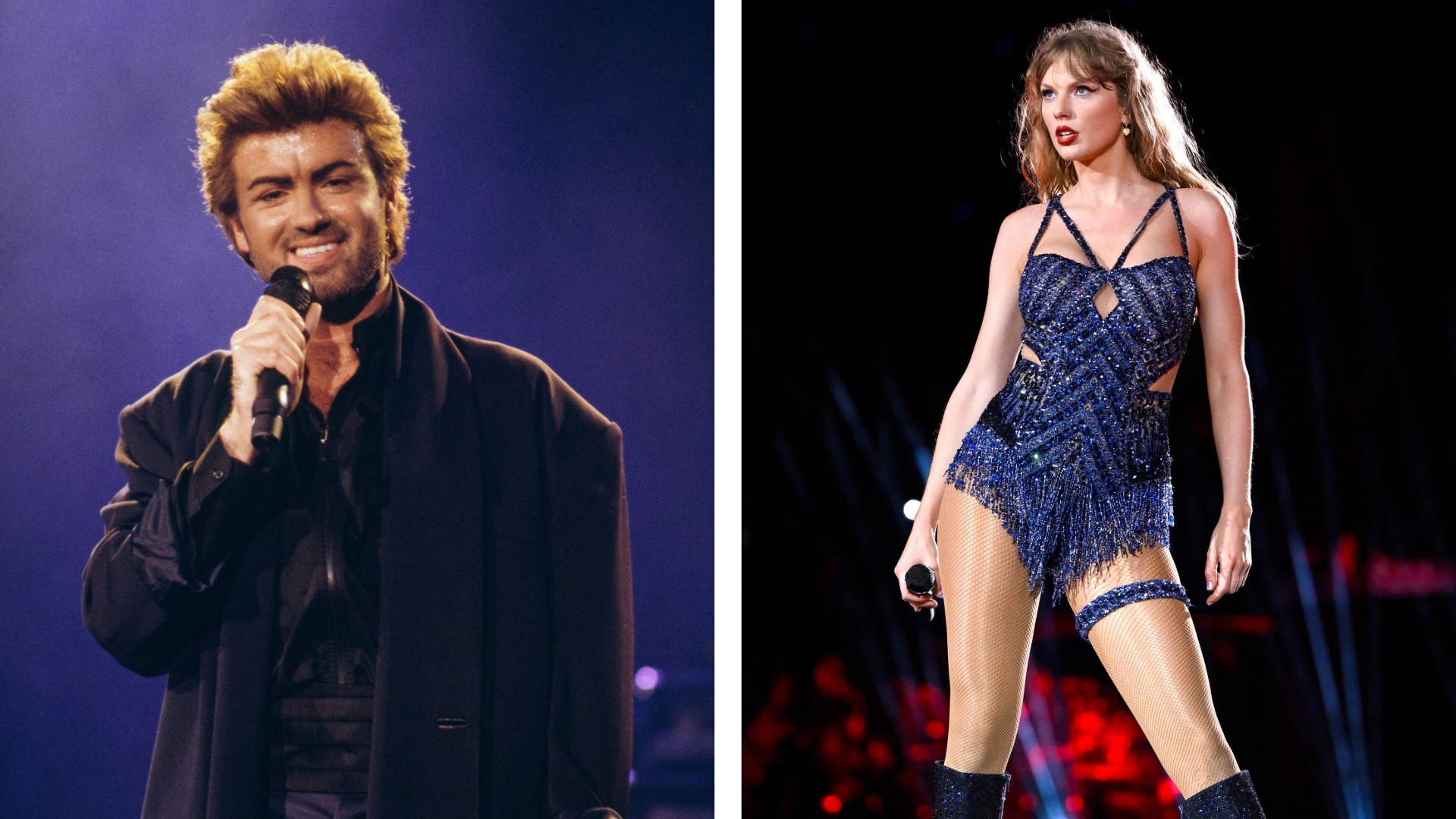“It started off sounding a bit like Prince. I wanted to hear something in my mix so I cut the snare and it changed the whole mood of the track": How George Michael accidentally created the ‘80s smash that inspired Taylor Swift on The Life of a Showgirl
“It ended up, in my mind, being the most original-sounding thing on the album,” he later said

Like so many of his songs, George Michael’s Father Figure has had quite the life. Recorded for his 1987 debut album, Faith, it became the record’s fourth single, reaching number one in the US.
Then, following the pattern of other hits of that era, it enjoyed a second life on TikTok, going viral after being used in daring 2024 Nicole Kidman thriller, Babygirl.
But that’s not the end of the story. Taylor Swift's 12th album, The Life of a Showgirl, is released today, and features a song called - you guessed it - Father Figure, which has Michael credited as one of the writers.
Beyond having the same title, though, which is sung in a similar rhythm in the chorus, the two songs have very little in common. It doesn't sound like anything has been sampled, and there's not much in the way of interpolation - in fact, we almost wonder if Swift needed to credit Michael at all.
Perhaps she just wanted to honour an artist that she's a fan of - as you might expect, Michael's estate is happy with the move - or maybe she was being ultra-cautious. Swift certainly has form in this area, having previously given songwriting credits to the members of British pop group Right Said Fred on 2017's Look What You Made Me Do, which bears just a passing resemblance to their 1991 hit, I'm Too Sexy.
Who knows, but what we can say for sure is that the original Father Figure could itself have sounded very different - and possibly not have enjoyed the same commercial impact or staying power - had it not been for one of those happy studio accidents that we hear about so often.
Speaking to Fred Bonson for The Billboard book of number one hits, from 1992, Michael explained how Father figure could have ended up sounding “totally different” if he’d stuck to his original blueprint.
Want all the hottest music and gear news, reviews, deals, features and more, direct to your inbox? Sign up here.
“The initial concept for Father Figure was to make it a kind of mid-tempo dance track,” he said. “And what happened was I wanted to hear something in my mix so I happened to cut out the snare on the board and suddenly it changed the whole entire mood of the track.
“Suddenly it seemed really dreamy. And this was halfway through writing it because I was writing the song as I was going along in the studio. And I just thought, ‘well, hey, this is actually much better!’ So I worked the rest of the feel of the track around this spacey type sound. And it ended up, in my mind, being the most original-sounding thing on the album.”
Michael would tell a similar story in 2010 when he was interviewed by DJ Mark Goodier for the liner notes for the Faith: Legacy Edition album reissue.
“Do you know what’s interesting about the making of that song? It started off with a rhythm track with a snare, and when you play it like that it sounds a bit like Prince,” he said. “But I must have been listening to it without the snare and gone, ‘Oh my God, that totally changes the record!’ It suddenly becomes a gospel record.”
You can hear what he means. Add snares to the two and four beats in Father Figure and it sounds much more generic, but take them out and the whole feel of the song changes. Throw in a gospel choir and a breathy, Middle Eastern-sounding synth riff and you’ve got a soulful, off-kilter classic.
And with his ear for a hit, Michael knew he was onto something as soon as he lost that snare: “A couple of things in my career have been a complete accident, where I stumbled upon the sound,” he told Goodier. “I know when something resonates, and one of my saving graces is that I can hear something when I stumble upon it. When I’m actually going for something else, on the way to a different sound, I have the ability to stop and say, ‘No. Actually, that’s much better.’ It’s tiny little things like that that make a record, I think.”
Whatever magic Michael made in Father Figure, it has since captured the imagination of millions, including Taylor Swift. And if her younger fans now seek it out, yet another generation will be enjoying what's become an all-time pop classic.

I’m the Deputy Editor of MusicRadar, having worked on the site since its launch in 2007. I previously spent eight years working on our sister magazine, Computer Music. I’ve been playing the piano, gigging in bands and failing to finish tracks at home for more than 30 years, 24 of which I’ve also spent writing about music and the ever-changing technology used to make it.
You must confirm your public display name before commenting
Please logout and then login again, you will then be prompted to enter your display name.

